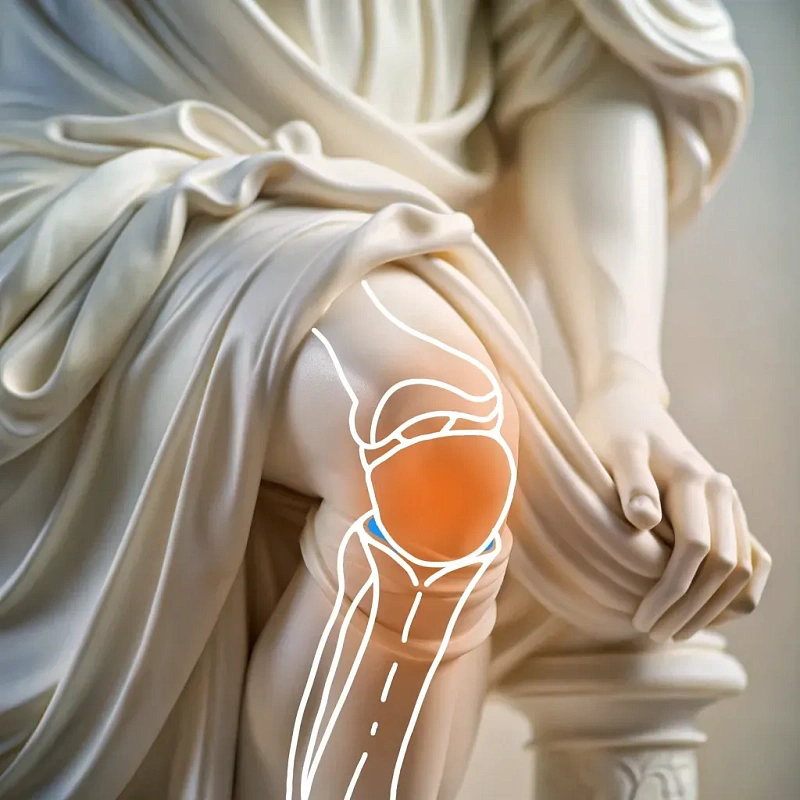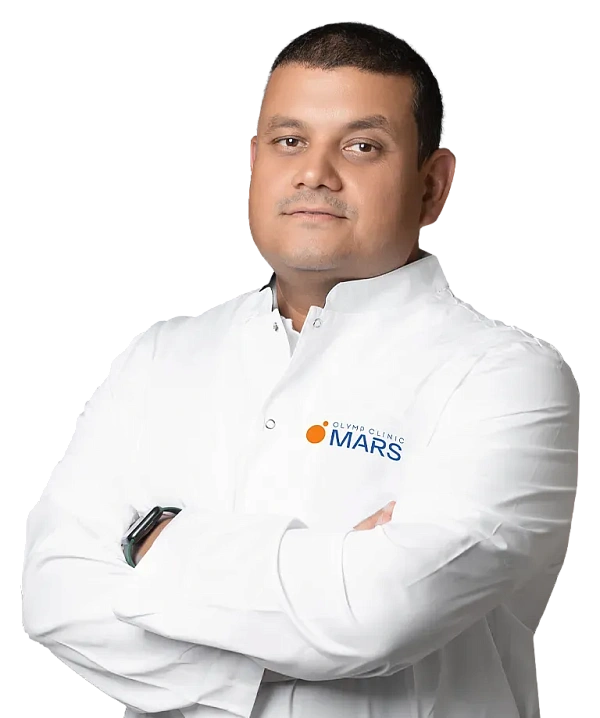Rehabilitation arthroscopy of a large joint
Removal of the infectious process from the joint cavity to restore its normal functioning.

Bacterial infections of the joints, such as septic arthritis, are serious pathologies in which the infection penetrates into the joint cavity, causing inflammation and accumulation of purulent exudate.
Sanation arthroscopy is a key method of treating such infections, allowing minimally traumatic removal of purulent contents and infected tissues, rinsing the joint cavity and preventing further spread of infection. Surgery is necessary when conservative therapy (antibiotics and punctures) cannot cope with the infection. The procedure is performed using an arthroscope, an endoscopic equipment that allows the surgeon to visualize and treat the affected areas of the joint through small incisions.
Blood type and Rh factor. Biochemical research. Coagulogram for the assessment of blood clotting. General blood and urine analysis Radiography and MRI or CT to visualize the condition of bones and surrounding tissues (determined at the initial consultation) Examination for the presence of infectious diseases (HIV, hepatitis). Inoculation for antibiotic sensitivity for the choice of antibacterial therapy. ECG and fluorography. Ultrasound of the veins of the lower extremities. ECHO of KG and EGDS with a long history of the disease, with constant use of painkillers. Consultation with an anesthesiologist and therapist. An endocrinologist if surgery is necessary.
Arthroscopic rehabilitation is performed under anesthesia or conduction anesthesia. The doctor makes several small punctures: one for the insertion of an arthroscope with a video camera and two for surgical instruments. Irrigation fluid is injected into the joint cavity to expand the joint and facilitate access to the affected areas. The surgeon examines the joint cavity, removes purulent masses, infected tissues, and also rinses the cavity with antiseptic solutions. If necessary, pathological neoplasms (for example, osteophytes or cysts) can be removed, as well as cartilage plastic surgery and excision of inflamed synovial membranes.
An arthroscope with a video camera for visualization of the joint. Surgical instruments for removing pus and infected tissues. Irrigation system.
After surgery, the patient stays in the hospital for one to three days, depending on the severity of the infection and the extent of the intervention. In the first days after surgery, it is recommended to raise the operated joint to an elevation to reduce swelling, provide the joint with rest, and conduct early physical exercises under the supervision of a doctor. Full recovery takes from a few weeks to several months.
Benefits
Minimal injury
The operation is performed through small incisions, which reduces tissue damage.
Effective removal of infection
It allows you to remove pus and infected tissues, helps eliminate inflammation.
Fast recovery
Arthroscopy provides a shorter rehabilitation period.
Small scars
Barely noticeable scars remain after the operation.
Frequently Asked Questions
How long does arthroscopic joint rehabilitation last?
When can I return to normal activity?
Can the infection return after surgery?
Didn't find an answer to your question?
You can describe your problem in detail and ask a question to the doctor. He will answer you and help you find a solution
Врачи
Смотреть всех врачейOrthopedic Trauma Surgeon
Similar referral activities
Arthroscopy of the ankle joint
Ankle arthroscopy is a minimally invasive surgical procedure used to diagnose and treat various diseases and injuries of the ankle joint.
Arthroscopy of the knee joint
Knee arthroscopy is a minimally invasive surgical procedure for the diagnosis and treatment of injuries and diseases of the knee joint. It allows examining the joint for damage and eliminating the identified defects.
Arthroscopy of the elbow joint
Arthroscopy of the elbow joint is a minimally invasive surgical intervention that allows for accurate diagnosis and simultaneous treatment of joint injuries.
Arthrodesis of the joints of the fingers of the hand
The destruction of the joints of the fingers of the hand is accompanied by pronounced pain and impaired functions. Arthrodesis is a surgical intervention in which the affected joint is completely immobilized, which relieves pain and progression of inflammation.
Arthroscopic revision of the cystic joint
The condition of the wrist joints determines the functioning of the hand. Arthroscopic revision is a minimally invasive diagnostic procedure that assesses the condition of the joint tissues, which is necessary for planning subsequent treatment.
Arthroscopy of the shoulder joint
Arthroscopy of the shoulder joint is a minimally invasive surgical procedure designed to diagnose and treat various diseases and injuries of the shoulder joint.
